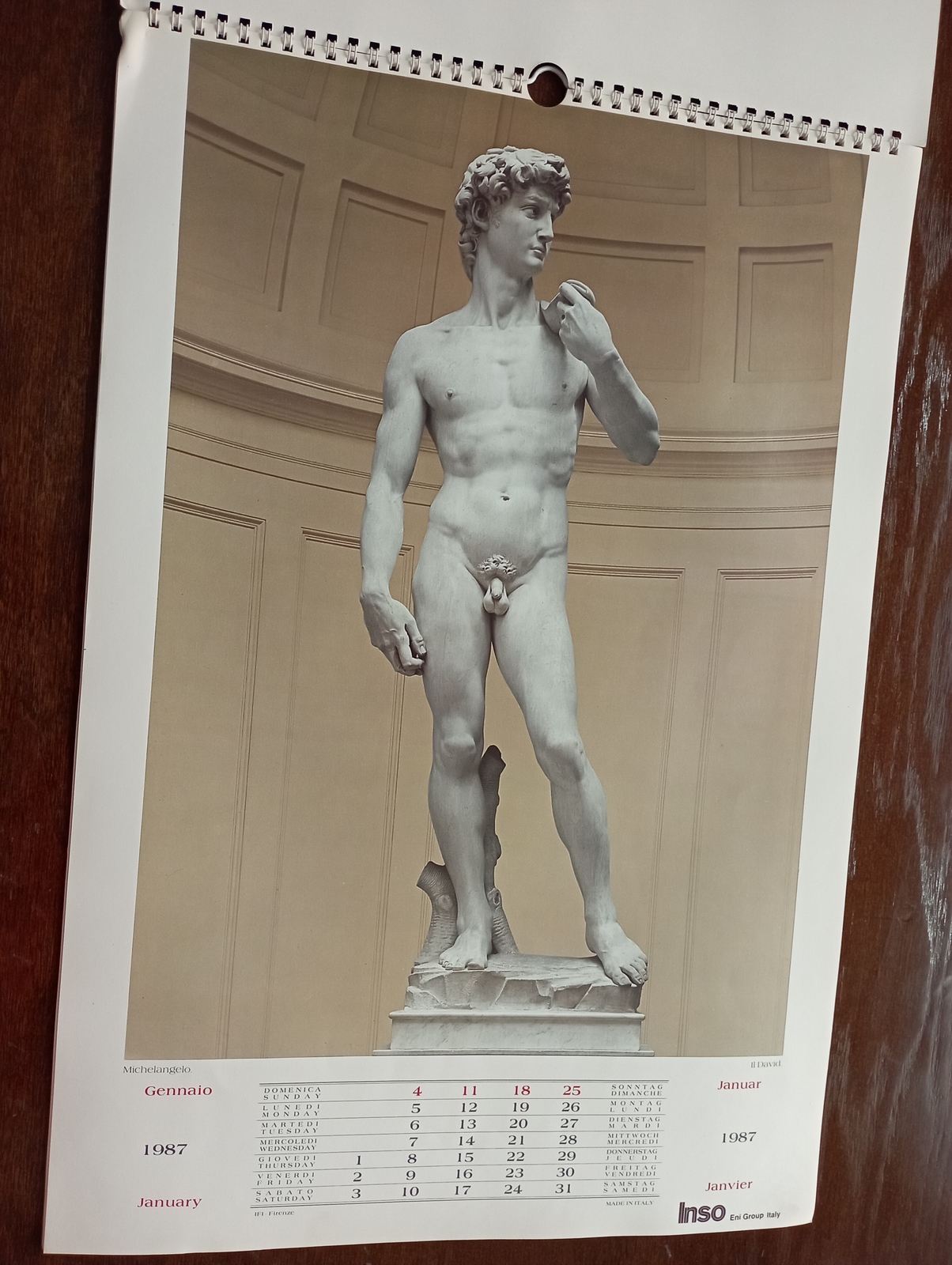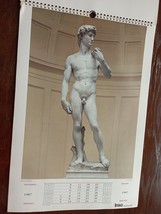Rendered at 04:35:16 05/09/25
An old Gregorian calendar in 1987 for an Italian company displaying some of the
£262.60 GBP
Ships from
Egypt

Shipping options
Offer policy
OBO - Seller accepts offers on this item.
Details
Return policy
None: All purchases final
Purchase protection
Payment options
PayPal accepted
PayPal Credit accepted
Venmo accepted
PayPal, MasterCard, Visa, Discover, and American Express accepted
Maestro accepted
Amazon Pay accepted
Nuvei accepted
Shipping options
Offer policy
OBO - Seller accepts offers on this item.
Details
Return policy
None: All purchases final
Purchase protection
Payment options
PayPal accepted
PayPal Credit accepted
Venmo accepted
PayPal, MasterCard, Visa, Discover, and American Express accepted
Maestro accepted
Amazon Pay accepted
Nuvei accepted
Item traits
| Category: | |
|---|---|
| Quantity Available: |
Only one in stock, order soon |
| Condition: |
Used |
| Originality: |
Reprint |
| Listed By: |
Dealer or Reseller |
| Subject: |
Famous Paintings/Painters |
| Style: |
Ancient Art |
| Size: |
Medium (up to 36in.) |
| Height: |
15 |
| Artist: |
A.R. Penck |
| Color: |
Multi-Color |
| Date of Creation: |
1970-1989 |
| Medium: |
Other |
Listing details
| Seller policies: | |
|---|---|
| Shipping discount: |
No combined shipping offered |
| Posted for sale: |
More than a week ago |
| Item number: |
1369781252 |
Item description
An old Gregorian calendar in 1987 for an Italian company displaying some of the works of the artist Michelangelo .
Michelangelo di Lodovico Buonarroti Simoni , known simply as Michelangelo, was an Italian sculptor, painter, architect and poet of the High Renaissance. Born in the Republic of Florence, his work had a major influence on the development of Western art, particularly in relation to the Renaissance notions of humanism and naturalism. He is often considered a contender for the title of the archetypal Renaissance man, along with his rival and elder contemporary, Leonardo da Vinci.[2] Given the sheer volume of surviving correspondence, sketches, and reminiscences, Michelangelo is one of the best-documented artists of the 16th century and several scholars have described Michelangelo as the most accomplished artist of his era.
He sculpted two of his best-known works, the Pieta and David, before the age of thirty. Despite holding a low opinion of painting, he also created two of the most influential frescoes in the history of Western art: the scenes from Genesis on the ceiling of the Sistine Chapel in Rome, and The Last Judgment on its altar wall. His design of the Laurentian Library pioneered Mannerist architecture.[5] At the age of 71, he succeeded Antonio da Sangallo the Younger as the architect of St. Peter's Basilica. He transformed the plan so that the western end was finished to his design, as was the dome, with some modification, after his death.
Michelangelo was the first Western artist whose biography was published while he was alive.[2] In fact, two biographies were published during his lifetime. One of them, by Giorgio Vasari, proposed that Michelangelo's work transcended that of any artist living or dead, and was "supreme in not one art alone but in all three."[6]
In his lifetime, Michelangelo was often called Il Divino ("the divine one").[7] His contemporaries often admired his terribilita?his ability to instil a sense of awe in viewers of his art. Attempts by subsequent artists to imitate[8] Michelangelo's impassioned, highly personal style contributed to the rise of Mannerism, a short-lived style and period in Western art following the High Renaissance.
Added to your wish list!

- An old Gregorian calendar in 1987 for an Italian company displaying some of the
- 1 in stock
- Price negotiable
- Handling time 3 days. Estimated delivery: Wed, Jun 4th
Get an item reminder
We'll email you a link to your item now and follow up with a single reminder (if you'd like one). That's it! No spam, no hassle.
Already have an account?
Log in and add this item to your wish list.






























